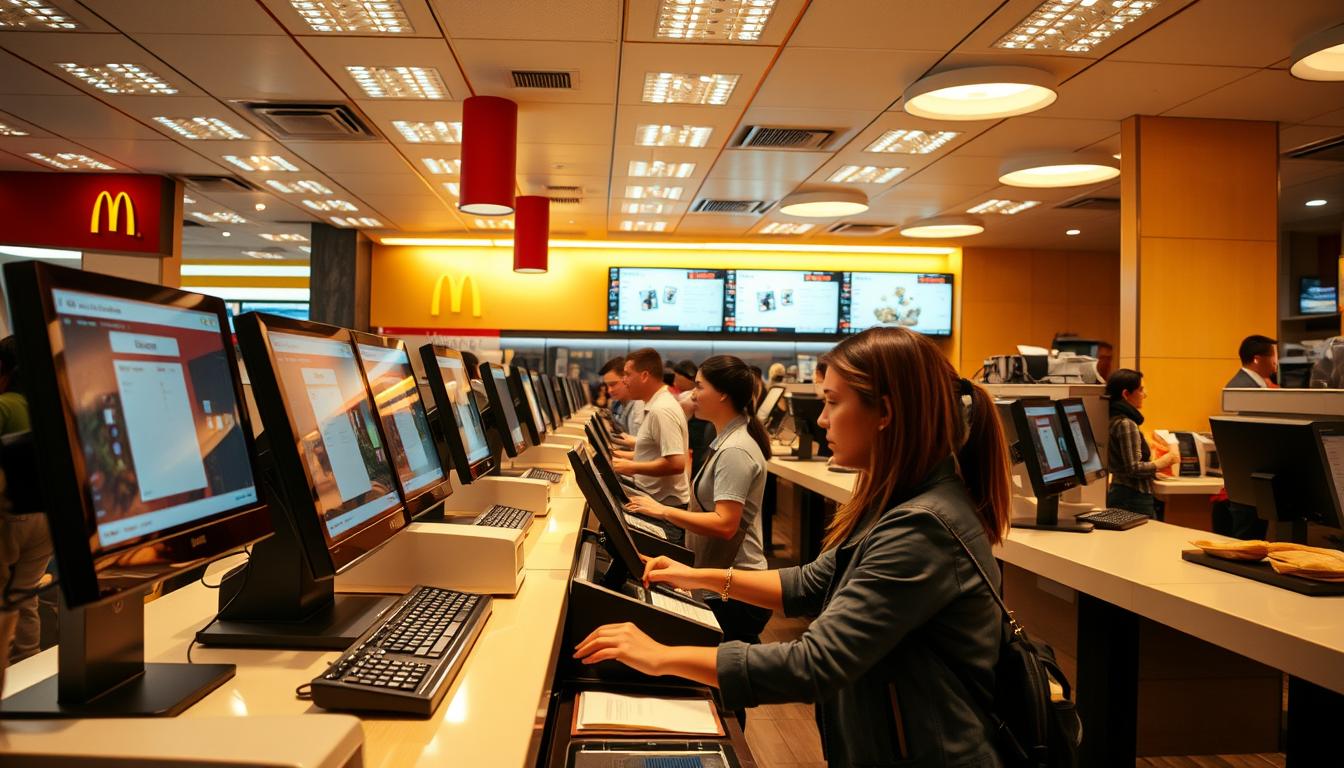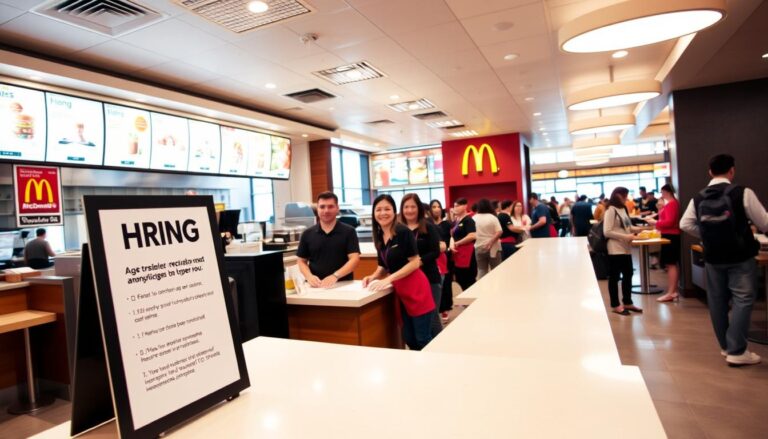As the fast-food industry continues to evolve, the importance of effective employee training cannot be overstated. With the rise of digital simulators, employees can now learn to operate complex systems in a hands-on, engaging environment.
A prominent example of this innovative approach is the use of a digital simulator to train employees on the point-of-sale system, allowing them to handle customer transactions with ease and accuracy.
This interactive training solution is revolutionizing the way employees learn and interact with customers, ultimately enhancing the overall dining experience.
Understanding McDonald’s Digital Training Revolution
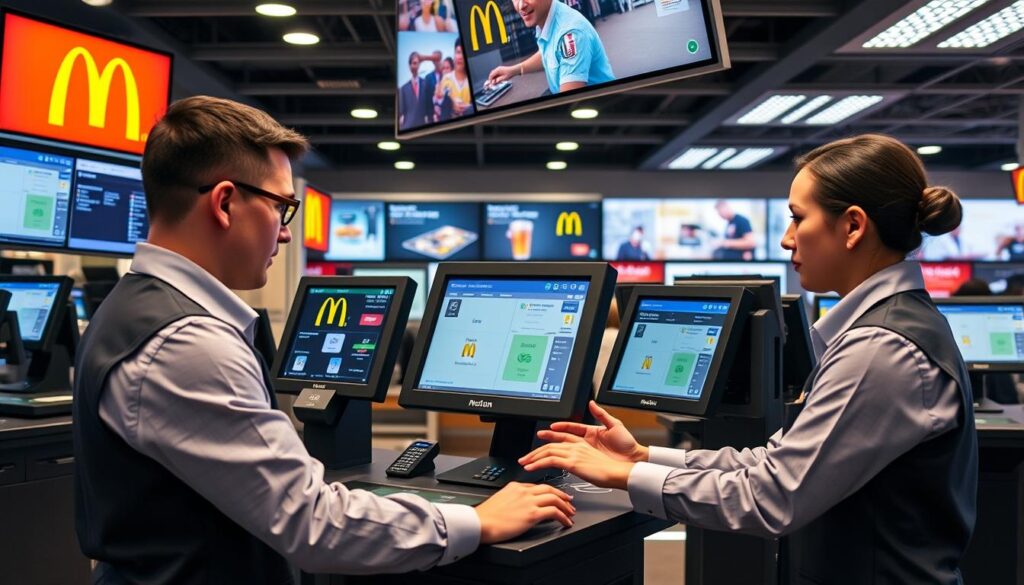
The fast-food giant has embraced a new era in training with its innovative POS training simulator. McDonald’s has revolutionized training for its employees with the McDonalds POS Training Simulator, turning traditional learning into an engaging experience.
From Traditional Learning to Interactive Experience
McDonald’s journey from conventional classroom-based training to interactive digital learning has significantly enhanced employee engagement. The POS training app bridges the gap between theoretical knowledge and practical application in a risk-free environment.
Meeting Modern Training Challenges
The shift to interactive POS training has addressed high employee turnover challenges in the fast-food industry. Gamification elements have transformed dry, technical training into an engaging experience, appealing to McDonald’s predominantly young workforce.
The Evolution of McDonald’s POS Systems
From manual cash registers to sophisticated digital platforms, McDonald’s has continuously updated its POS systems to stay ahead in the fast-food industry. This transformation has been pivotal in enhancing customer experience and streamlining operations.
1980s to Present: Key Milestones
McDonald’s transitioned from manual cash registers to digital systems in the 1980s, marking the beginning of its POS evolution. Key milestones include the rollout of electronic POS systems globally in the 2000s and the integration of advanced features like mobile app compatibility and real-time data analytics in the 2020s.
Technological Advancements Over the Decades
The POS system at McDonald’s has seen significant technological advancements, including the adoption of electronic POS systems and the incorporation of mobile app compatibility and real-time data analytics. These advancements have contributed to improved customer service and operational efficiency.
Some key developments in McDonald’s POS evolution include:
- Transitioning from manual to digital POS systems
- Rolling out electronic POS systems across global locations
- Incorporating advanced features like kiosk interfaces and real-time data analytics
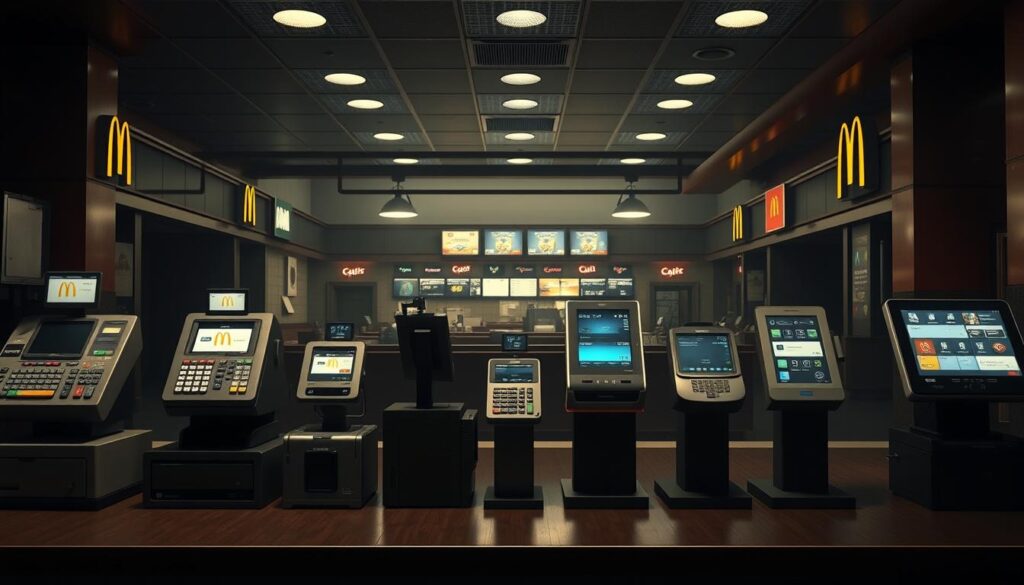
How the McDonald’s POS Training Game Works
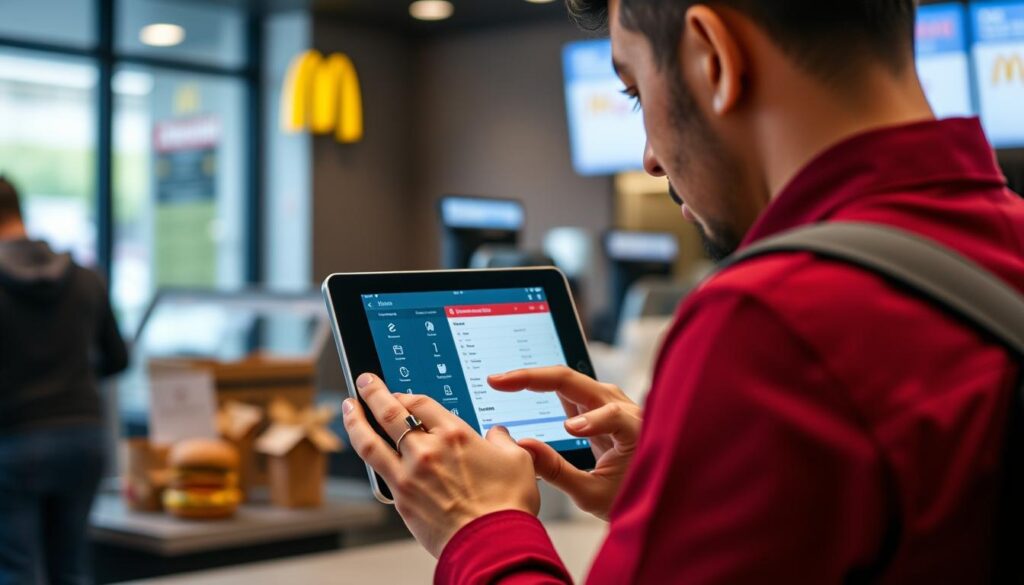
With its interactive design, the McDonald’s POS simulator is changing the face of cashier training. The McDonald’s POS Training Simulator has redefined cashier training through interactive, real-life scenarios.
Interactive Gameplay Elements
The game-like design of the simulator makes it both a training tool for new employees and a public attraction. Players complete tasks like taking orders and managing customizations.
Realistic Simulations of Customer Interactions
The simulator recreates authentic customer interactions, including special requests and payment processing, helping users gain insights into real-world operations while honing essential skills with the mcdonald pos app.
Key Features of the McDonald’s POS Training Simulator
Several key features make the McDonald’s POS Training Simulator a valuable resource for employees. This tool is designed to be easy to use, catering to individuals of all ages and language proficiency levels.
User-Friendly Interface Design
The simulator boasts an intuitive interface that simplifies the learning process. Its clear layout and bright graphics enable users to start training immediately, even without prior experience.
Scenario-Based Learning Modules
The training simulator includes scenario-based learning modules that progressively build users’ confidence and competence with the McDonald’s POS system. These modules simulate real-world customer interactions, helping users develop essential skills.
Progress Tracking and Performance Metrics
The simulator’s progress tracking features allow both trainees and managers to monitor skill development over time. Performance metrics help identify areas where users need additional practice or support, ensuring they are well-prepared for the demands of a fast-food environment.
- Realistic simulations prepare employees for busy periods.
- Interactive challenges enhance decision-making skills.
- Comprehensive progress tracking supports skill development.
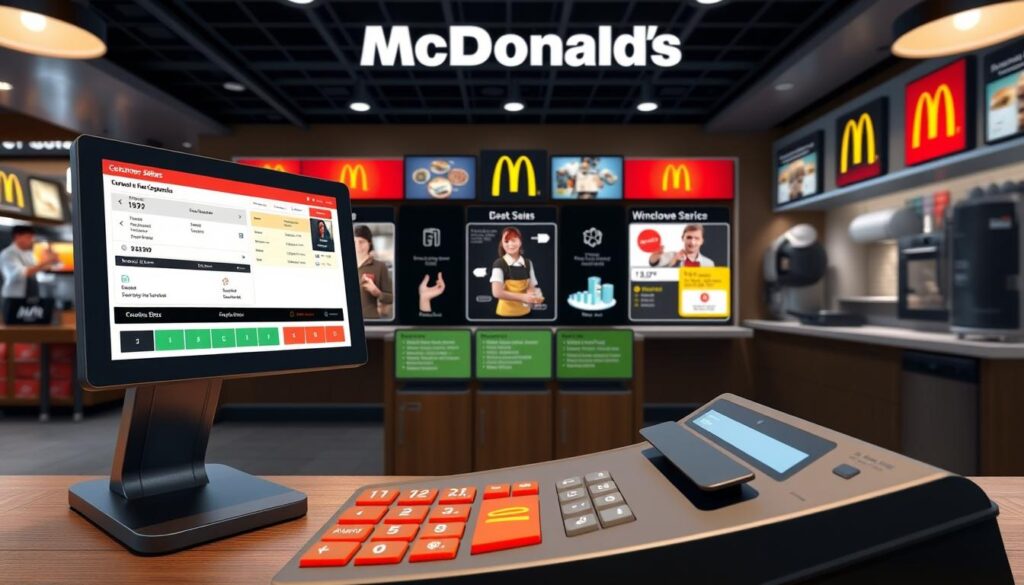
Benefits for McDonald’s Employees
Employees at McDonald’s can significantly enhance their skills through the POS training game. This interactive training method not only engages workers but also equips them with essential skills required for their roles.
Skill Development and Retention
The POS training game is designed to improve skills such as multitasking, memory, and time management. By using realistic simulations, employees gain experience in a risk-free environment, which boosts information retention. As a result, workers become more confident and proficient in dealing customers.
Preparation for High-Pressure Situations
The training game get ready employees for high-pressure situations by simulating busy restaurant conditions. This preparation enables workers to efficiently manage orders and customer interactions during rush periods, ensuring a smoother service even under stress.
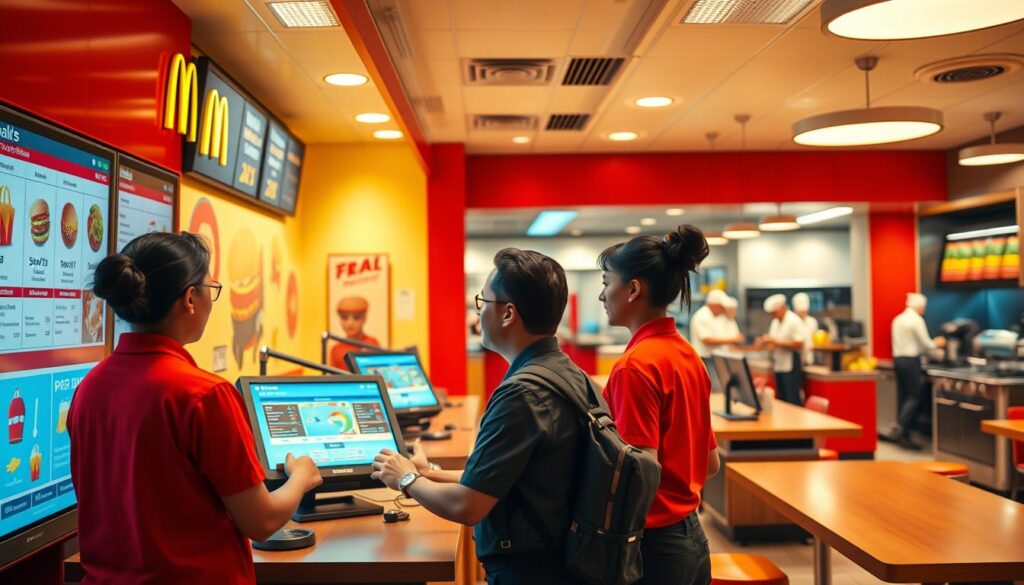
The NP6 POS System: McDonald’s Technology Backbone
At the heart of McDonald’s operations is the NP6 POS system, a custom-built solution tailored to its global needs. This system has evolved over time, initially developed by Savista and later acquired by Torex, before McDonald’s made further in-house modifications to meet its high-volume requirements.
Core Functionalities and Capabilities
The NP6 POS system boasts several key features that enhance operational efficiency. It enables High-Speed Order Processing, ensuring quick service with minimal downtime. Additionally, it facilitates Real-Time Inventory Management, optimizing stock levels and reducing waste. The system also supports Contactless Payments, adapting to modern payment preferences, including mobile wallets.
Integration with Other McDonald’s Systems
The NP6 POS system seamlessly integrates with other McDonald’s operational systems. It connects directly to the Kitchen Display System (KDS) for accurate order fulfillment. Furthermore, it enables Integration with Mobile and Kiosks, allowing for seamless omnichannel order management. This integration ensures consistent service across McDonald’s vast network of over 38,000 locations worldwide.
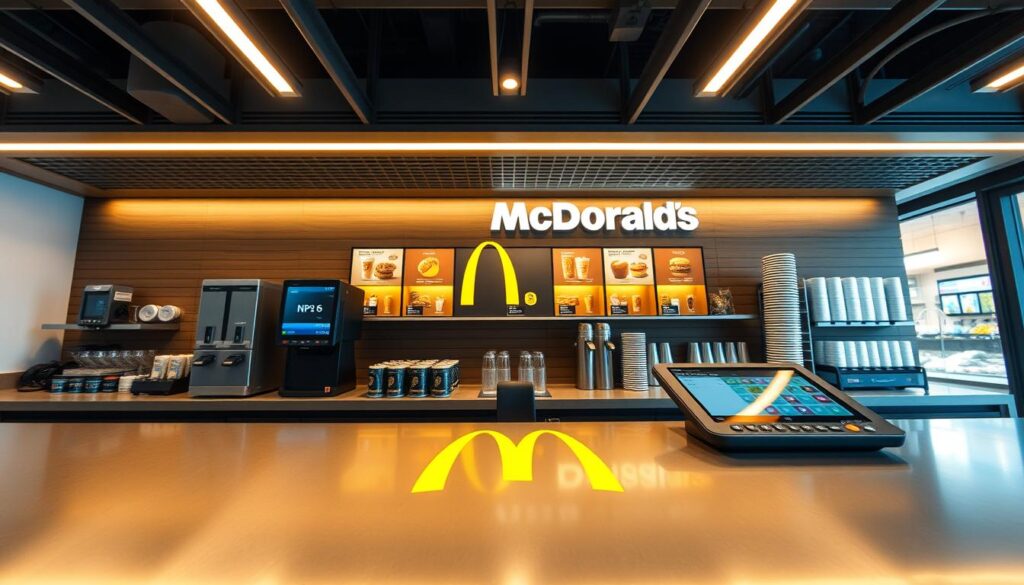
Implementing Similar Training Approaches in Your Business
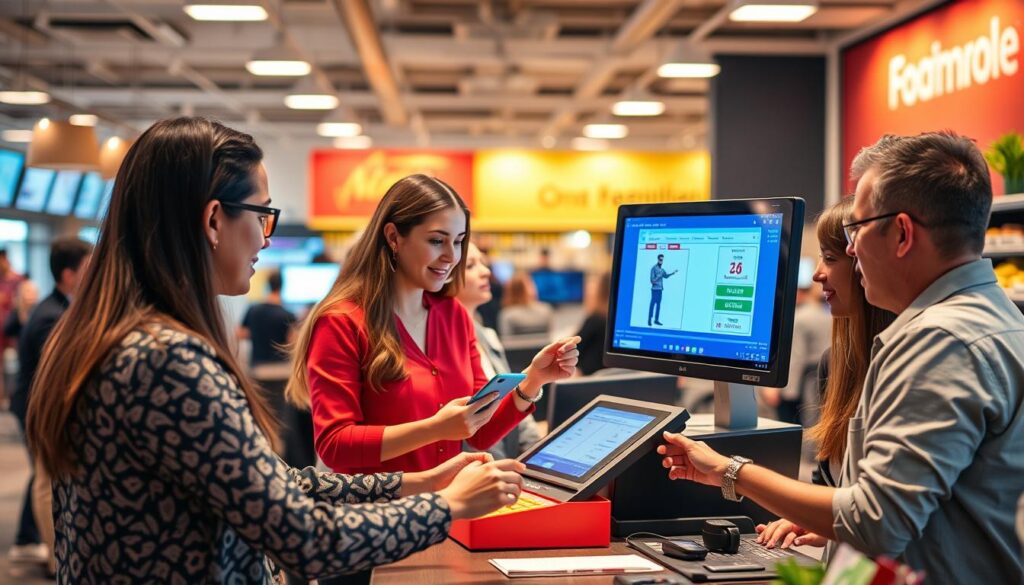
McDonald’s success with its POS training game offers valuable insights for businesses looking to improve their training approaches. By adopting similar strategies, you can enhance your employees’ skills and overall business performance.
Steps to Create Effective Training Simulations
To create effective training simulations, start by defining clear training objectives and identifying your target audience. Conduct a thorough needs assessment to understand the specific requirements of your business. Choose the right simulation type, such as VR or role-play, and invest in advanced L&D software to develop realistic scenarios.
Measuring Training Effectiveness
To measure training effectiveness, incorporate regular feedback checkpoints and monitor real-time training progress using analytics. Continuously evaluate and improve your training programs to ensure they meet your business needs and drive long-term success.
Conclusion: The Future of POS Training
The McDonald’s POS training game has revolutionized employee onboarding, setting a new standard for the industry. As McDonald’s continues to innovate its POS technology, the future of POS training looks promising. Emerging trends include AI-driven voice ordering and automated kitchens, enhancing consistency and reducing labor costs. The McDonald’s POS training app demonstrates the potential for gamification in employee training across various sectors. Effective POS training remains crucial for operational excellence and customer satisfaction. Future iterations may incorporate augmented reality or voice recognition, further enhancing the training experience for employees.

